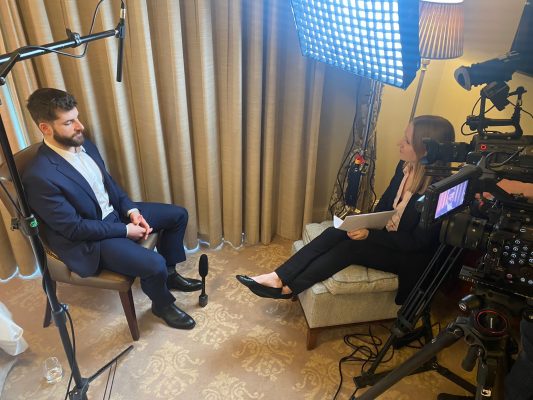Earlier this month, there was evidence that not many businesses had considered that someone who would ‘prefer not to hear about Mothers’ Day’ would also prefer not to receive multiple emails asking them if they’d prefer not to hear about Mothers’ Day.
In a sense, this was a collective action problem. What might have once been a considerate gesture began to demonstrate a lack of consideration the more other brands followed suit.
It’s part of a broader problem for businesses. Namely that their communication and branding is shaped by the behaviour of their competitors, as opposed to a unique value proposition or relationship with customers and clients.
In recent years, this has prompted people to explore why the visual identity of various consumer brands is increasingly represented by a blur of identikit logos. Others have noted that B2B brands at trade shows will typically display presentation slides featuring similar colour palettes and buzzwords.
Businesses have either lost sight of the benefits of distinctiveness – or have become nervous of appearing distinctive in a way that is damaging.
Research suggests this is a significant missed opportunity. An academic study from the marketing research centre Ehrenberg-Bass has demonstrated the importance of brand distinctiveness. These are the assets that immediately distinguish a brand from its competitors. This was found to be even more valuable than brand differentiation – which involves demonstrating that a brand’s offering is significantly different to its competitors.
There is no reason, however, why businesses can’t achieve both. Indeed, Mark Ritson responded to the Ehrenberg-Bass research in Marketing Week, claiming he was “convinced they have gone too far in belittling differentiation to promote the power of distinctiveness”. He also noted that a “smart marketer can enjoy the benefits of a distinctive brand and a realistically differentiated one too”.
This meaningful differentiation is also easier within the B2B space. As specialists in travel PR, there is ample opportunity for us to create a meaningfully differentiated brand for a business that helps airlines boost revenue by 80%. This offers a level of meaningfulness above that of Coca-Cola associating its brand with happiness, as opposed to Pepsi linking its brand with fun, for instance.
All of this is to say that businesses need to reframe their approach to communication if they are to move from distinctly average to meaningfully distinct brands.
The competitor isn’t always right
Public and private sector organisations are increasingly tapping into the power of behavioural science to engage consumers. This has prompted many to embrace a ‘nudge theory’ approach devised to exploit people’s natural desire to avoid acting in a way that is out of step with the majority.
It’s an insight that has resulted in HMRC sending letters announcing that ‘most people pay their taxes on time’ – and successfully changing behaviour as a result.
Unfortunately, awareness of this approach hasn’t translated into the recognition that a desire to adhere to prevailing norms is shaping brands’ own communication.
The result is a formulaic approach to consumer interactions, based largely on replicating competitor activity.
This gives us Mothers’ Day emails achieving the opposite effect of their stated intention and International Women’s Day posts drawing accusations of hypocrisy.
The answer for brands is to interrogate their own offering. This includes the role they play in people’s lives and the values they genuinely put into action – before ensuring these shape their interactions with their target audiences.
Keeping consistent
With this framework to deliver unique messaging in place, it’s then a case of ensuring this informs all communication – while staying mindful of your audience and addressing them with empathetic, human language.
There’s also the small matter of bringing the entire organisation on board. This involves engaging everyone with why brand distinctiveness is important and empowering them to shape the company’s distinct approach.
Once this is achieved, distinctive communication could become as automatic as copying a competitor’s email strategy. Fortunately, it will also be far more effective.
Get in touch with us if you’d like to discuss how to create a distinctive brand in more detail









